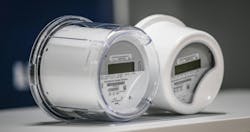In 2009, the U.S. Department of Energy (DOE) received $4.5 billion from the American Recovery and Reinvestment Act (ARRA) to support the demonstration and deployment of smart grid technologies across the nation. The funds were apportioned among various efforts, including $100 million for workforce training; however, the largest shares, $3.7 billion and $650 million, respectfully, went toward the Smart Grid Investment Grant and Smart Grid Demonstration Program. The combined SGIG/SGDP effort consisted of 131 projects involving hundreds of utilities and equipment vendors, state and local government officials, and experts from several national laboratories. The combined funding, when considering the cost-share requirement (participants were required to contribute at least 50% of the total project cost), exceeded $9 billion Although some ARRA projects are still underway, the DOE funding came to an end at the close of September 2015.
The ARRA had a significant affect in catalyzing the advancement of smart grid technologies. The technology that was deployed included smart meters, programmable communicating thermostats, automated feeder switches and capacitors, equipment health sensors and phasor measurement units (PMUs) plus requisite communications and information management systems. In some cases, utilities were able to accelerate their smart grid deployment plans by up to five years, while others less familiar with the technology were able to begin efforts to modernize and realize benefits.
• Talquin Electric Cooperative, a rural utility in northern Florida, provided smart meters to its 60,000 customers through SGIG funding. Previously, Talquin’s customers read their own meters and reported their monthly usage on the portion of the bill they returned with their payment or by calling in to report the meter reading. With smart meters deployed across its territory, Talquin is avoiding thousands of truck rolls previously required for routine service connections and disconnections, and is saving hundreds of thousands of dollars annually.
• The Electric Power Board of Chattanooga, Tennessee, in an effort to reduce community losses due to power outages, deployed automated feeder switches, smart meters and a fiberoptic communications backbone. A fierce wind storm in July 2012 knocked out power to 80,000 customers, but the automated sectionalizing restored power to 40,000 of those customers within seconds and enabled the city to fully restore power a day and a half earlier than expected, saving the city more than $1 million in restoration costs and Chattanooga’s customers potentially millions in avoided damages from the power outage.
• Florida Power & Light determined smart meter data enabled it to detect shifts in transformer voltage output, which indicated deterioration in transformer performance and the potential for equipment failure. As a result, FPL has instituted a proactive transformer replacement program that has reduced FPL’s transformer replacement costs and the likelihood of unplanned outages for its customers.
• ARRA funds provided to transmission companies and independent system operators resulted in an eightfold increase in the deployment of networked PMUs (with more than 1,400 PMUs deployed in 2015) across the transmission grid, providing reliability engineers and operators with new information about grid conditions such as power oscillations that have not been observable traditionally with SCADA systems. These power oscillations indicate improperly set controls, inadequately modeled generation or loads, or malfunctioning equipment, permitting engineers to fine-tune and adjust the system, resulting in improved overall performance at lower costs and providing an improved capability to detect serious system disturbances that could lead to wide-scale catastrophic outages.
In addition to such achievements, the ARRA was able to move the ball considerably with respect to institutionalizing cybersecurity practices within utilities and in making progress in the development of needed interoperability standards through the efforts of both private and public institutions, including the National Institute of Standards and Technology.
Yet, given the accomplishments achieved, there is still much to do. We are still faced with system integration issues, and it will take a while for utilities and regulators to truly account for all the potential benefits of the technology. Being able to provide consistency in accounting for costs and benefits is important to support the business case for the new technology.
Furthermore, as we close the era of ARRA funding, we are witnessing a new set of demands on grid function and structure that we probably did not fully appreciate five years ago. These demands are brought on by the likelihood of a distributed energy future and the desire for a more efficient, resilient, yet affordable electric grid, and they will change the way we conduct both grid planning and operations. The transformation to a more digital, integrated grid will bring both challenges and opportunities.
Joseph Paladino ([email protected]) is technical advisor to the Office of Electricity Delivery and Energy Reliability, U.S. Department of Energy.
Editor’s note: Visit www.smartgrid.gov for more information.


